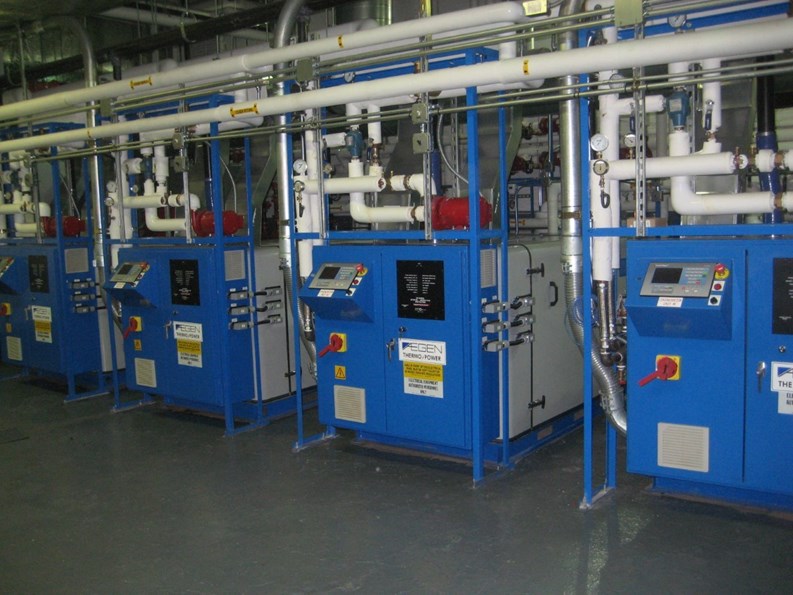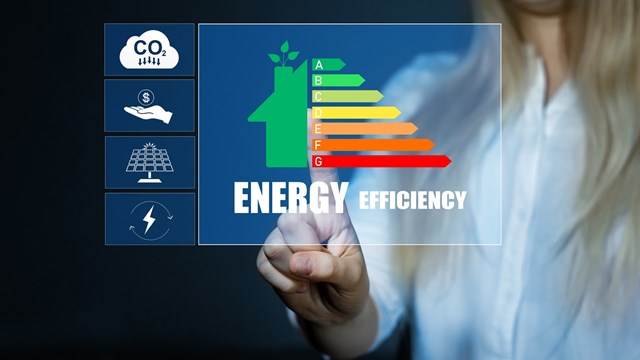With today’s condo and HOA residents much more conscious of their impact on the environment and looking for ways to reduce it, smart boards and property managers are looking to help. Simple tasks like turning down thermostats, shutting off air conditioners during the day and turning off lights when not in use all help, but there’s more that can be done. More and more buildings and associations are deciding to invest in greener equipment and devices that use less energy and leave a smaller environmental footprint.
It is important to talk about all the benefits associated with installing energy efficient measures beyond the obvious energy and money savings. Often times, high efficiency equipment requires less maintenance, runs quieter and improves overall comfort. These are quality of life improvements.
There’s also a large variety of Energy Star rated appliances and equipment out there and often they’re not more expensive or not much more expensive than any others. When considering if an appliance or piece of equipment is worthwhile for a multifamily building or association to invest in, each board’s building or HOA will have different criteria for their purchases and upgrades.
Money-Saving Components
A common perception is that replacing old windows with new energy-efficient windows can save a lot of energy, but this is not always the case. Replacing windows can save energy, but is typically less cost effective than tune ups and retrofits to heating and cooling equipment or repairing the air leakage of a building.
Recent innovations in boiler controls for multifamily units have shown promise to reduce boiler cycling, thus saving energy by modifying how the boiler works. These controls, according to experts, have fairly quick paybacks.
Speaking of boilers, Victor Nazario, the resident manager and superintendent of The Whitney in the New York City neighborhood of Murray Hill, says there are ways to control energy loss—measures he learned while taking instructional classes through the 1,000 Green Superintendents program.
The 1,000 Green Superintendents program, which is part of NYC’s SEIU 32BJ’s Thomas Shortman training fund, is a collaborative effort between superintendents, property managers, union staff and 32BJ members that strives to increase the eco-friendly factor of New York City multifamily buildings by increasing the knowledge of green initiatives. New Jersey also has a local chapter of the 32BJ building services union in Newark. The 40-hour course, which when completed, awards supers with green building certifications from the Building Performance Institute, covers multiple subjects in green building initiatives, including water conservation, utilities and energy benchmarking and sustainability/indoor environment quality.
"One thing we learned is how to most effectively work our boilers. There are so many ways boilers lose energy. They taught us step-by-step the technology and the history of how boilers work, operate, how you can maximize them, how they have energy losses in at least four different stages. This, to me, became exciting. No longer was it a dull, boring thing. Now, here I am repairing things knowing I'm lessening the energy footprint of the building," Nazario says.
LEED Life in the Garden State
More and more developers in New Jersey are incorporating LEED-approved elements and materials into both condo and rental residential projects. For example, the 30-unit Garden Street Lofts in Hoboken live up to their name by repurposing and adding onto an early 20th century industrial building (a former coconut processing plant), turning what was once disused commercial space into highly desired residential condo units. Sales began in the winter of 2008, and units sold quickly.
According to Hudson Place Realty, the Garden Street Lofts’ sales and marketing firm, developer Larry Bijou—a founder of Bijou Properties in Hoboken—partnered with New York City-based ShoP Architects to design the project with a LEED Silver certification objective in mind, from the start, a first for a New Jersey condo. Elements such as low-VOC paint, high-efficiency HVAC equipment, and even sustainably harvested hardwoods for floors and trim all contributed to reduce the project’s environmental impact. Builders even repaved the street out front with reclaimed cobblestones to preserve the block’s historic flavor.
Edge Lofts, a 35-unit Hoboken-based residential building is the latest of Bijou's buildings to premiere, opening earlier this year. Edge is one of New Jersey's first LEED Platinum-certified residential buildings and features environmentally friendly amenities such as rooftop solar panels and reclaimed wood flooring According to an May 2013 interview with “The Jersey Journal,” Bijou says the Edge uses up to 40 percent less energy than tradition residential high rises.
Bijou's next project is Park Place, a 212-unit, LEED Certified green residential and commercial development. It is expected to open in 2014.
Co-Generation
To tackle the increasing power needs of large residential buildings and provide energy for such buildings during power outages, some buildings and large developments have started "co-generation" and/or "demand response" programs.
Co-generation is an inexpensive source of heat for a swimming pool, cooling unit, or building. These systems may not provide 100 percent of a customer’s energy needs, but they take over a significant portion of the utility setup, save considerable amounts of money and re-use formerly wasted energy—three big pluses. Co-generation programs enable a building or group of buildings to generate some of their own power and then use it themselves to save money. It also allows them to stabilize their power supply during times of heavy usage, such as during very hot or very cold weather.
Reflective Energy Solutions in Hackensack, New Jersey, helps condo managers find the right system for their needs. “CHP captures the heat that is created, and usually lost, in the conversion from gas or fossil fuels into electricity,” says Aaron Liberman, RES’s executive vice president. “If you have a building that needs heat or steam … to heat hot water, then your overall efficiency can be 85 percent, because it (CHP) is throwing off so much heat.”
Several New Jersey multifamily properties have taken advantage of co-gen technology, including Coppergate House, a 150 unit apartment building in East Orange that was built in the 1970s and faced double-digit increases in its energy costs. Other New Jersey-based CHP’s are the Kingsley Arms in Asbury Park, the Executive House in East Orange and the Blair House Condominium in Hackensack.
Demand Response
Demand control ventilation (DCV) is also an option for large buildings. If you have air conditioning on all the time, you must ventilate the space with a certain amount of fresh air. A DCV system monitors the carbon dioxide level in a space and lets you slow down the flow of fresh air within safe levels. Chillers with variable speed drives are also available or existing chillers can be retrofitted with variable speed drives. You can reduce the speed ranges for fans and pumps by 25 to 30 percent when an area is not in use. When you have an event or an area is in use, you can run the system at its full speed.
The way the demand response program works is that power supply is reduced in the building in common areas, like the lobby, for instance, and when the building cuts back on its electric use, that usage is put back onto the overall power grid to help prevent blackouts citywide.
Co-generation and demand response programs use different means to attain the same end of putting less of a strain on the electricity grid. Simply put, co-generation is when a building takes advantage of the energy thrown off by a heating plant to generate more power, according to experts. A demand-response system, allows a building to control its demand for electricity based on the time of day and the demand on the system. It is estimated that a building energy management system can reduce fuel usage by 15 to 30 percent with payback in as little as two years.
A Bright Idea
One of the easiest and most common places boards look to save money on energy costs is lighting. The newest generation of solid-state lighting lasts up to 25 times longer than a standard incandescent bulb and saves up to 80 percent in comparison. Replacing common area lighting with LED bulbs can prove to be cost effective over the long run by reducing both operating and maintenance costs. In fact, T-12 fluorescents are being phased out and replaced by T8 or T-5 fixtures and LED is quickly replacing fluorescent and becoming the lighting fixture of choice, says Edward H. Brzezowski, PE, the vice president of the energy/MEP services division for Falcon Engineering in Bridgewater.
Nazario saw a huge dip in his building’s electricity bill after making the switch to fluorescent. “In our building we have 29 stories, and on each floor we have four bulbs. We were using 75-watt bulbs. The mini-twist, at a 15-watt output, gives us the same lighting of a 75-watt incandescent. When you multiply that by four bulbs times 29 floors, that's thousands of dollars we're saving the building,” Nazario says.
Benchmarking and Energy Audits
“Another big and missing piece of the building and energy puzzle is how much you are using and how much should you be using,” Brzezowski says. “This important to know in time to take action and change the outcome of high energy bills before they arrive. The formula I developed several years ago for successful and sustainable building projects is as follows: energy efficiency plus renewable energy plus monitoring and verification equals and sustainable building,” he says.
Deciding on the right piece of new equipment to install—one that will reduce energy and maintenance costs, have the highest return-on-investment, all while maintaining or increasing comfort and safety—can be a daunting task best left to a professional. Because of this, one of the most consistently sound investments owners can make in their property is a benchmarking study and an energy audit.
“If you did a benchmark all of a sudden you have information. It’s part of a puzzle,” Brzezowski says. “I’d say the best way to begin would be with a building assessment—a walkthrough energy audit. We look at the reserve reports that identify all the things you have to do over the next couple of years.”
While cities like Washington, D.C., New York City and Philadelphia legally require buildings to participate in energy benchmarking, such is not the case in New Jersey. However, the practice is highly encouraged and is the first step toward making a building more efficient. Programs such as New Jersey’s Clean Energy make it easier for buildings to evaluate energy usage and compare its yearly performance, as well as compare usage to similar buildings, by offering free benchmarking services.
Money Matters
More-efficient technologies tend to have a higher upfront cost and reduced operations cost for the lifetime of the technology. Many associations ask the question: Does greener, more efficient technology always cost more?
“Typically the answer to 'first cost' is yes, but when you look at the life cycle cost the answer is in most cases will be 'no.' The government and also utility company funded incentive programs have tried to account for this first cost issue by providing the [money] to help energy efficiency common place,” Brzezowski says.
However, there are countless incentive programs out there to help lighten the costs for buildings. “Many of the energy incentive programs have some type of final incentive payment tied to proving that you have saved the energy you said you would,” Brzezowski says. “Documented energy savings will be especially important as new forms of energy efficiency investments are offered by outside parties to make improvements to your building for no upfront costs and are paid for from energy consumption reduction and energy commodity cost reductions over 10 to 15 year periods,” he adds.
Incentives range from resident level discounts—up to $500 for switching to energy efficient cooling systems—to building level, with programs such as New Jersey SmartStart Buildings, which will provide up to $500,000 per utility account based on the project.
For more information on programs available to improve your multifamily co-op or condo visit njcleanenergy.com. Also, visit www.dsireusa.org, a state-by-state database of incentives for renewables and energy efficiency programs. For government incentives, visit www.Energystar.gov. Boards and HOAs should also consult their own tax attorneys for possible savings.
While retrofitting and renovating a building in order to create a more energy efficient living space might be daunting and overwhelming, the eventual financial gain and increased property value makes the process well worth it. It just takes patience, steadfastness and an open mind.
“It all starts with a plan, thinking out of the box a bit, and trying to be proactive instead of reactive. The master plan, design/bid and build process tied with some type of periodic or continuous energy monitoring and commissioning can help ensure the community that energy targets are being met and sustained,” Brzezowski says.
Keith Loria is a freelance writer and a frequent contributor to The Cooperator. Editorial Assistant Enjolie Esteve contributed to this article.







Leave a Comment